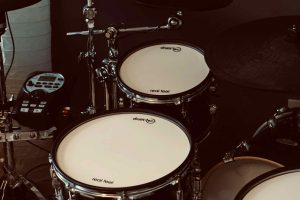A hybrid drum kit combines acoustic drums with electronics such as drum pads, sample pads or triggers, to combine acoustic drum sounds with electronic effects, samples and loops. Mainly used in live performances, hybrid drumming can result in a thicker, layered drum sound, or give the drummer more control over running a live show.
In this guide, we’ll take a closer look into hybrid drumming, including the pros and cons, what you need to create a hybrid drum kit, and some ideas about hardware to consider.
Are hybrid drums good?
Hybrid drumming has grown into a major trend among gigging drummers over the last 10 years. A major reason for this is the desire to bring a band’s studio sound to the stage in a more authentic way. In the studio, bands are unconstrained by the number of instruments they can play at once. As a result, it’s common to layer multiple sounds, add samples, loops, or other effects.
When it comes to playing those songs live, bands will often want to replicate the studio recordings as closely as possible. That’s fine if you’re a big act with an army of session musicians to play all your extra textures and sounds, but what if you’re a three-piece playing in a smaller venue?
Hybrid drumming is a potential solution, in a number of ways:
- Automatically layering electronic drum sounds over your acoustic drums in real time
- Trigger samples used on the studio recording of the song using drum pads
- Trigger loops and backing tracks via your drum kit
- Trigger effects like an 808 sub bass to emphasis key moments in the song
The result is that you can put on a more professional show and give your audience a true representation of your studio recordings.
Pros and cons of hybrid drumming
If you’re weighing up whether to adopt a hybrid drum setup, here are some of the main things to consider:
| Pros | Cons |
| Bring samples and effects from your studio recordings to the stage | Additional set-up time required at gigs |
| Control backing tracks, click tracks or loops for your band | Additional cost of equipment if you don’t already own it |
| Broader scope to experiment with unique percussion sounds or add live effects | Requires time and effort to explore the creative possibilities |
| Use your existing eDrum equipment if you have it |
How to add electronic drums to your acoustic kit
There are a few different ways to add electronics to your acoustic kit and create a hybrid drum kit:
- Using a sample pad
- Adding electronic drum pads to your kit
- Mounting triggers to your acoustic drums
- Using a Yamaha EAD10
- Connecting your pads to a trigger module or drum module
Below, we’ll look at each of these in more detail.
Using a sample pad
A sample pad is one of the simplest yet most versatile ways to build your hybrid drum kit. Sample pads are a self-contained unit with several rubber trigger pads. These can be used to trigger one shot samples, start and stop loops, or be used to run click or backing tracks. The Roland SPD-SX is the industry standard sample pad, but other brands are available such as the Yamaha DTX M12 or Alesis SamplePad Pro.
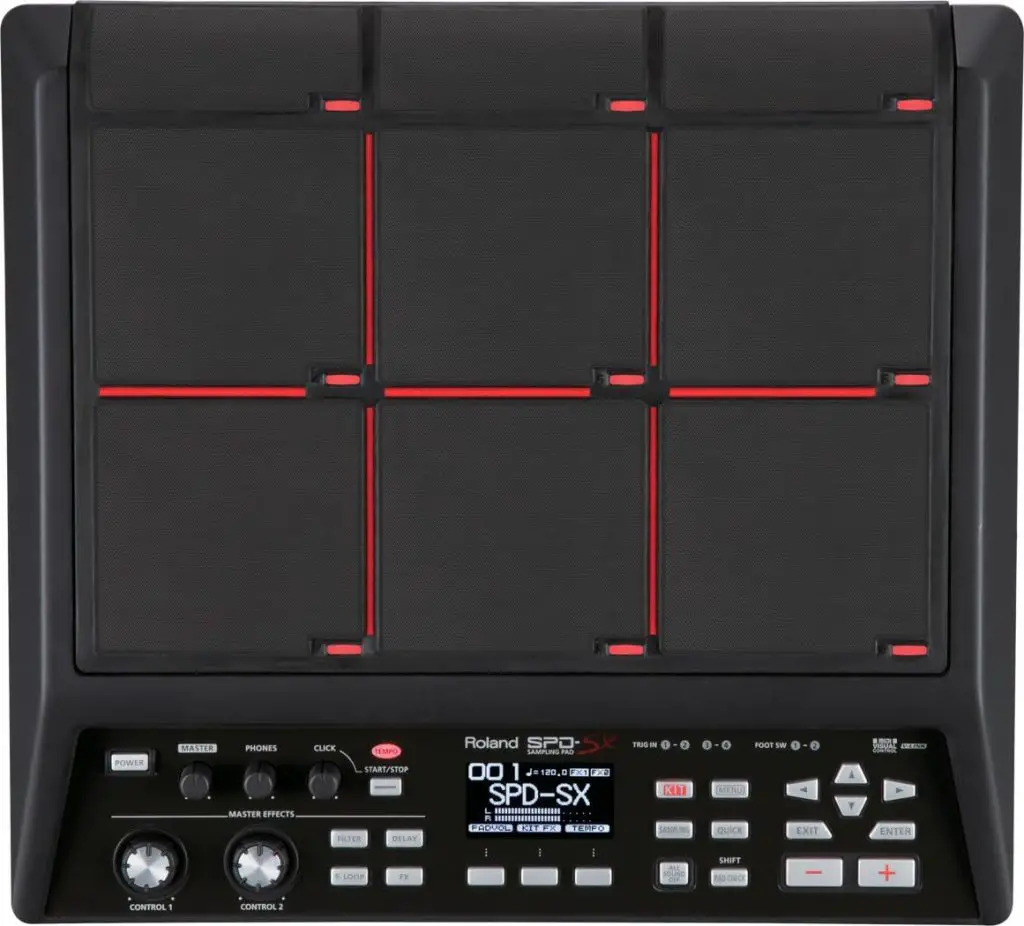
When it comes to positioning your sample pad, some drummers tend to place them to the left of their hi-hat stands mounted on a tripod. However, a big trend at the moment is to replace your rack tom with a sample pad. While this makes for a smaller acoustic kit, it’s more than made up for by the additional capabilities of the sample pad.
If you’re on a budget and not yet ready to dive into a fully-featured sample pad, then the Roland SPD-One could be a solution. This is a range of single-zone pads, coming in four versions with a different selection of samples and functionality. They can be played with sticks, hands or feet, powered by AC or batteries, and can be mounted to a drum kit.
This can be good if you want to enter the world of hybrid drumming with a single electronic pad. But with four versions, each with a different selection of samples, you’ll need to think about what sounds you want to add to your palette.
The four SPD-One versions are:
- SPD-1E (Electro) – 22 electronic-focussed samples including hand claps, snares, electronic cowbells and more
- SPD-1K (Kick) – 22 samples including 4 kick drums and percussion such as claves, guiro and hand claps
- SPD-1P (Percussion) – 22 percussion samples including snares, cymbals, congas, gongs and shakers
- SPD-1W (wav) – Import your own WAV samples to the 4GB onboard memory and play back as a one-shot sample or loop
Hybrid drum modules
There is only one product which falls into this category, which is the Yamaha EAD10, a unique drum module designed specifically for hybrid drummers. This module comes with a sensor that combines a bass drum trigger and microphone unit, which is clamped to your acoustic bass drum hoop, plus a control unit that looks like a standard eDrum module.

The microphone part of the sensor picks up your entire acoustic kit and allows you to add effects and reverb to fatten your drum sound. At home, you can put on a pair of headphones to hear this, or output it through the PA at a gig.
The drum unit component also includes two stereo and two mono trigger inputs, which, with a Y cable, means being able to add up to 6 single-zone electronic drum pads to your drum kit. You can also place triggers on your acoustic drums such as the snare, and layer electronic sounds on top of your acoustic drums.
Because of the EAD10’s microphone system, it can only be used as part of a hybrid drumming setup. While this results in a hybrid drumming system like no other, it limits the flexibility of the unit for other uses. For example, it cannot be used to run a standalone eDrum kit. If you want to use your hybrid drum equipment for other purposes as well, then read on to find out how to use your existing eDrum gear as part of a hybrid kit.
Using external triggers on your acoustic drums
Another option is to mount external triggers such as the Roland RT-30 to your acoustic heads and connect these to a drum module. This is useful if you want to layer electronic drums over your acoustic kit for a fuller sound. For example, you could layer a sub-bass sound over your kick drum for more emphasis, or layer an electronic snare sound over your acoustic snare drum.
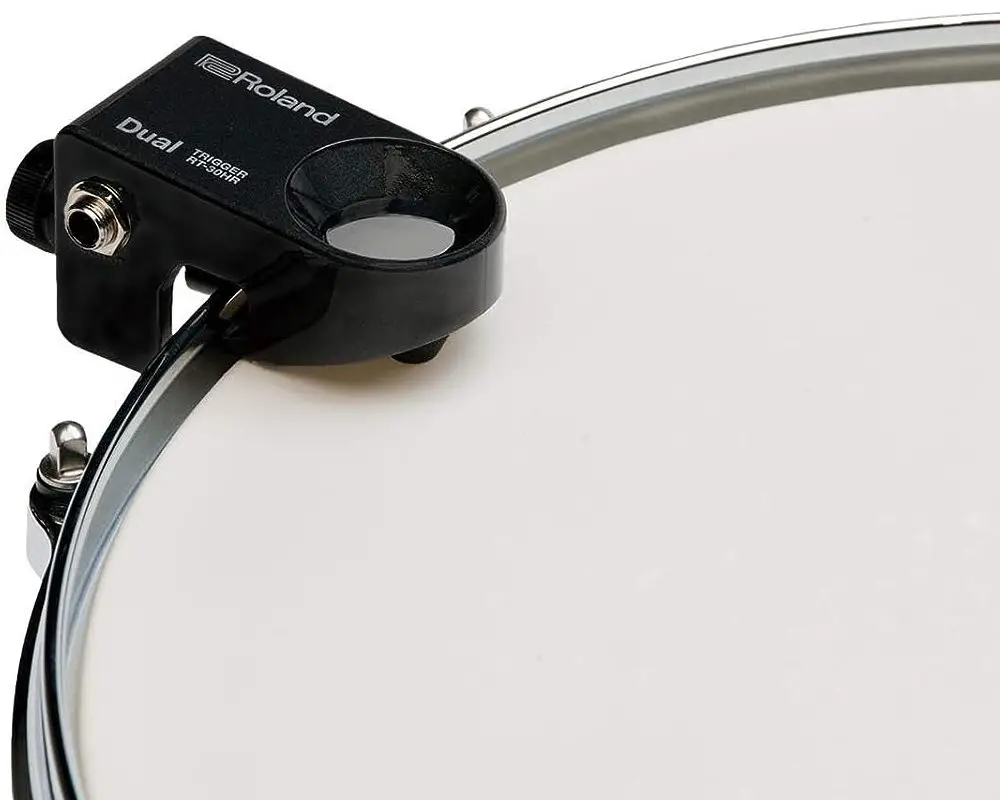
External triggers work with acoustic drum heads as well as mesh drum heads. Because they’re externally mounted, they simply clip on to the rim of your drum so that the sensor cone makes contact with the drum head. The trigger can then be plugged into your drum module, where it might need some adjustments to be made under the trigger parameters menu. From there, you can assign any sound you wish to your trigger from your drum module, or even trigger an external device using MIDI.
Using electronic drum pads
Another way to add electronics to your acoustic drums is to incorporate electronic drum pads and a drum module into your set up. This is a simple way to incorporate electronic percussion sounds into your music, and pads can be placed almost anywhere around your kit.
Notable drummers who incorporate electronic pads into their acoustic kits include Josh Dun, Rob Bourdon, and the late Neil Peart. This is also an affordable entry to the world of hybrid drums, as you can pick up a Roland TM-1 trigger module and a couple of drum pads very cheaply.
Connecting pads to a trigger module
If you simply want to add between one and twelve electronic pads to your drums, then a Roland Trigger Module might be the solution for you. Trigger Modules are a bit like cut down drum modules, able to accept an electronic drum trigger input. Trigger pad signals can then be output via MIDI over USB to a computer, or triggering onboard sounds.
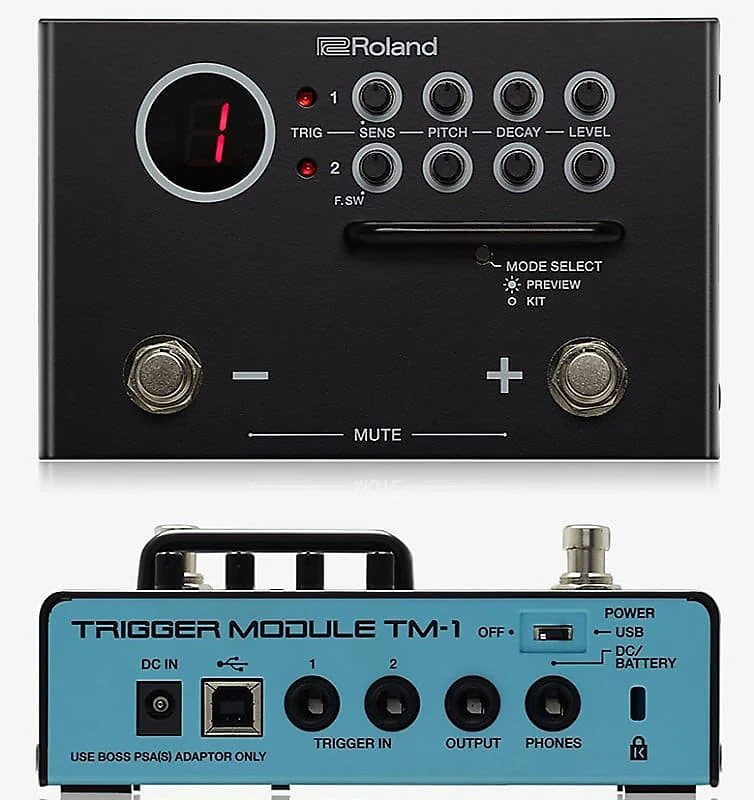
The TM-1 and TM-2 trigger modules are the most affordable in the range, able to accept either 1 or two stereo triggers or 2 or 4 mono triggers (using a Y cable). These modules come pre-loaded with 30 or 162 sound samples respectively, and can be used to trigger your own custom samples.
For more advanced applications, the TM-6 supports 6 stereo or 12 mono trigger inputs, and comes equipped with drum sounds taken from the V-Drums series of electronic drum modules.
Connecting pads to a drum module
If you already own a drum module, you can use this to control the electronics on your hybrid kit. Most drum modules such as those from Roland allow you to create your own drum kit presets. This means you can set up a custom kit containing only the drums and percussion sounds you need for your hybrid set up, all assigned to the correct inputs.
Some newer drum modules like the Roland TD-17 also have an SD card slot which can be used to load one-shot samples.
Yamaha DTX Hybrid Extension Pack
If you’re new to hybrid drumming and don’t yet own any electronic drum equipment, then the DTX hybrid extension pack could be an option for you. This bundle comes with two versions, containing a DTX502 eDrum module, a pair of XP70 single-zone pads, two drum triggers for mounting on acoustic drums, mounting hardware, and a choice of an XP80 3-zone pad or a TP70 single-zone pad. All that’s missing is a set of cables for the drum triggers.
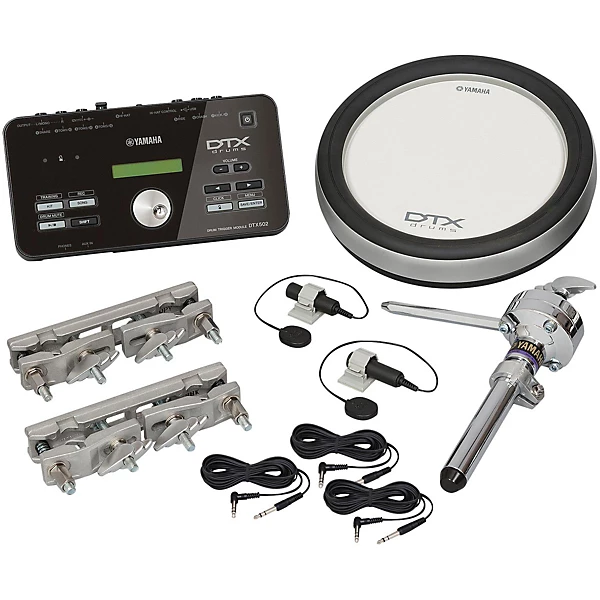
This package allows you to create a fairly extensive hybrid drum kit, for example, placing an electronic side snare to your left, or using the mono pad for triggering effects or samples, and mounting the drum triggers to your acoustic snare and bass drums to layer electronic sounds over your acoustic drums.
Because the DTX502 is a full eDrum module, it also offers an expansion path for adding further pads. And unlike most Roland modules, the DTX502 uses individual TRS trigger inputs, making cable management simpler if you’re not using the full complement of inputs.
This article contains affiliate links. If you purchase a product through certain links on our site, we may earn a small affiliate commission. Learn more about our adverts and why you can trust eDrumHub here.
Featured image by Jamieson Murphy


